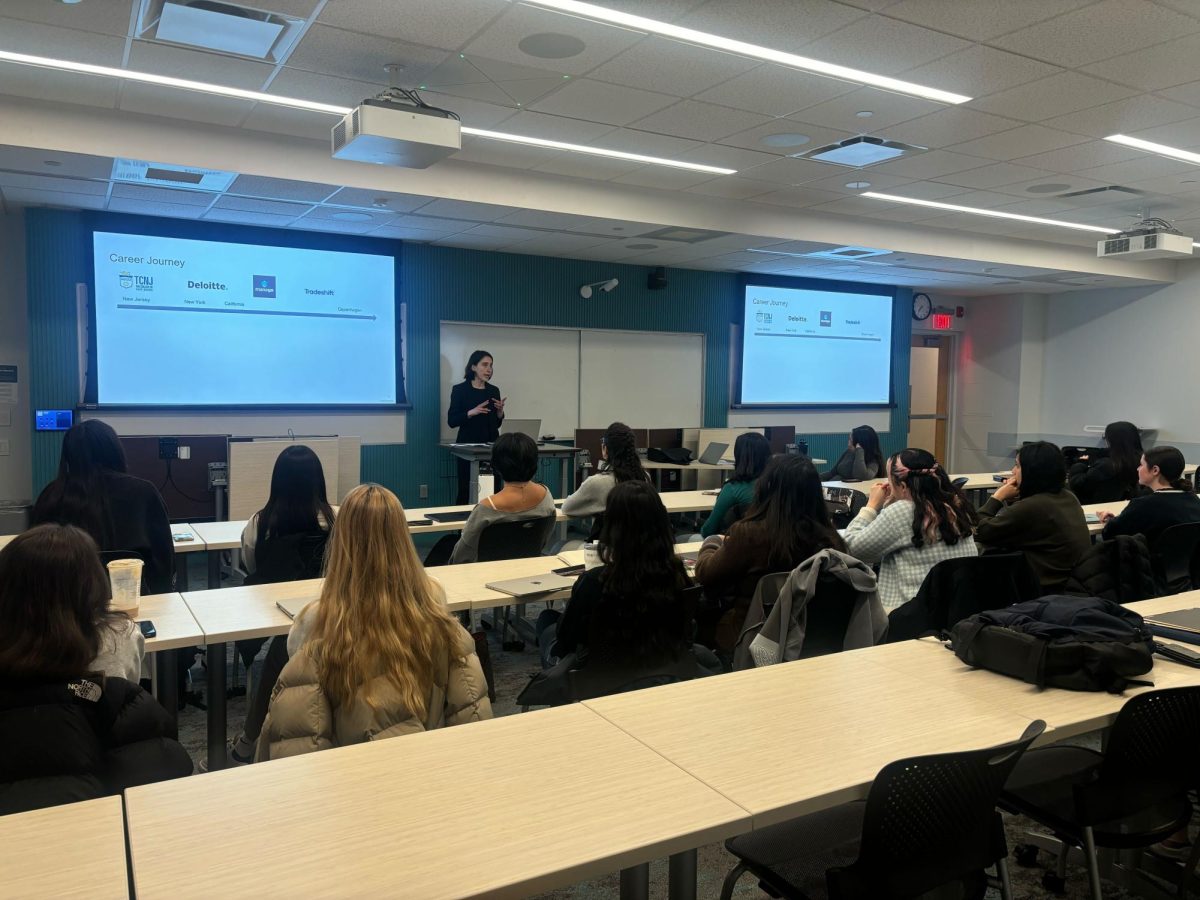By Elizabeth Levi, News Correspondent

The attendees of the opening of the Arnold S. Goldstein Simulation Laboratories Suite, on Sept. 19, witnessed a birthing as well as students taking care of a patient with heart palpitations.
Although it was only a simulation, students of the Bouve College of Health Sciences were the first to use the new state-of-the-art simulation laboratories. The laboratories, four in total, are designed to simulate real-life environments such as a doctor’s office, homeless shelter or hospital room.
Leigh McGuffin, a second-year graduate student in the Nurse Anesthesia program participated in a later simulation. Her role was an Intensive Care nurse within her group.
“It was incredible to be able to experience; you know, to have equipment that is actually being used currently in the hospital and to interact with other disciplines in the healthcare environment,” McGuffin said.
The laboratories are named in honor of Arnold S. Goldstein – a late professor and acting dean of the-then College of Pharmacy and Allied Health.
“Arnold absolutely loved Northeastern, and he loved his students when he was teaching – he really enjoyed Northeastern and he thought a lot of the school,” Marlene Goldstein, his wife, said.
After his passing in 2010, Mrs. Goldstein said her husband had left money in his will to go to Northeastern and provided $2 million to fund the new Arnold S. Goldstein Simulation Laboratories Suite.
“Simulation is a cutting edge technique in contemporary education, and using high fidelity simulators in order to ensure quality and safety is really what needs to happen for the future of healthcare education,” Bouve College of Health Sciences Dean Terry Fulmer said. “So we’re just so proud that the Goldsteins decided to [provide] valuable funding for us to get our simulation center in such a beautiful space for such an important reason.”
According to Simulation Center Director Jamie Musler, these simulations based on real scenarios will provide students with hands-on experience before they enter the workforce.
“Within those environments are state-of-the-art equipment, at least for the hospital side, so the students in these environments really shouldn’t be able to differentiate that they are in a learning environment versus a real world environment,” Musler said.
McGuffin said the simulation not only demonstrated taking care of a patient, but also taught the group of participating student about the atmosphere of the medical field.
“What I took away from this experience was how important it is to actually communicate with all the other disciplines in the hospital,” she said. “It’s never just an ‘I’ situation, it really is a team effort for everyone.”
Soon the labs will be used on a consistent basis by many courses – predominantly for nursing and physical therapy – according to Musler.
Goldstein, who both attended Northeastern and taught pharmacy law and business law at the school, would be thrilled to be associated with these laboratories, his wife said.
“I couldn’t have thought of a better place to put my husband’s name but on something in the Allied Health field,” she said.
Musler also said Goldstein would be proud of the opportunities the laboratories provide.
“One of the great things about this lab is it really is to the spirit of Arny’s philosophy and commitment to education,” Musler said. “He believed very strongly that students need to graduate not with an understanding of knowledge, but the ability to do things, and that the workforce we put out at the university was prepared to enter and start being productive right off the bat.”








